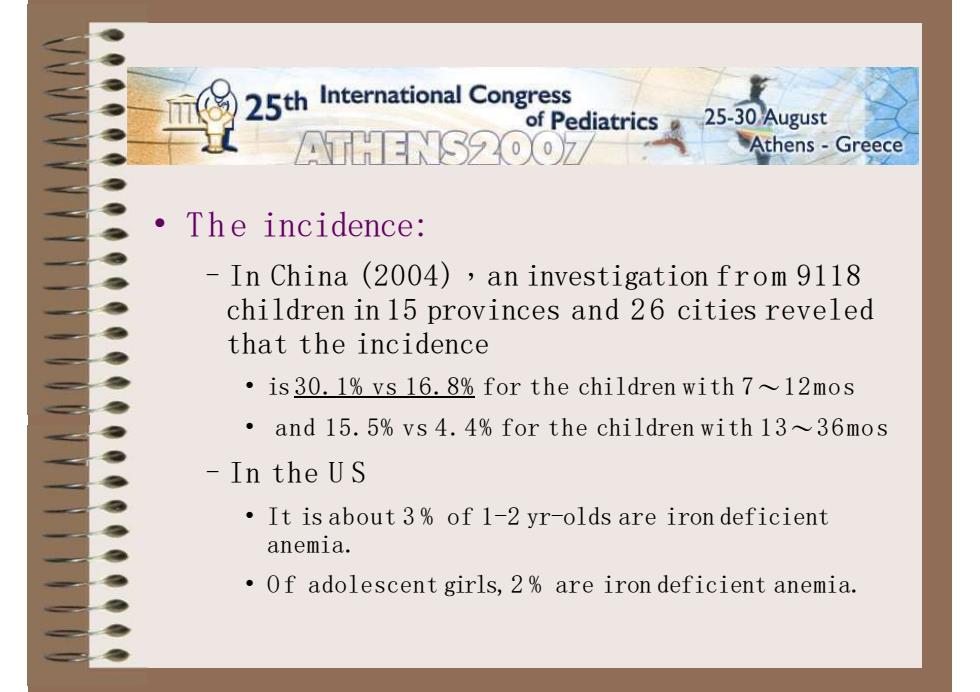
25th International Congress25-30AugustofPediatricsAthens-GreeceATHENS2OOZThe incidence:-In China (2004)an investigationfrom9118children in 15 provinces and 26 cities reveledthat the incidenceis30.1% vs 16.8%for the childrenwith7~12mos.and15.5%vs4.4%forthechildrenwith13~36mos- In the US.It isabout3% of 1-2yr-oldsare irondeficientanemia.: Of adolescent girls, 2% are iron deficient anemia
• The incidence: –In China (2004),an investigation from 9118 children in 15 provinces and 2 6 cities reveled that the incidence • is 30.1% vs 16.8% for the children with 7~12mos • and 15.5% vs 4.4% for the children with 13~36mos –In the U S • It is about 3 % of 1-2 yr-olds are iron deficient anemia. • O f adolescent girls,2 % are iron deficient anemia
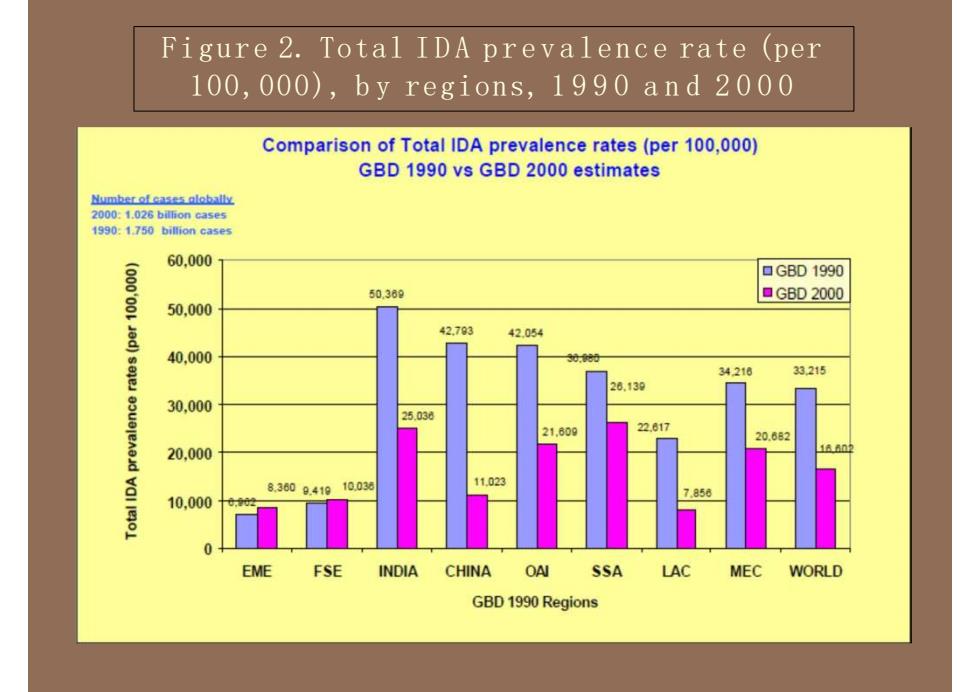
Figure 2.TotalIDA prevalence rate (per100,000),byregions,1990and2000Comparison of TotalIDAprevalence rates (per 100,000)GBD1990vsGBD2000estimatesNumbetofcasesalobalily2000:1.026bilfioncases1990:1750billion cases60,000GBD1990oGBD200050.36950,00042.79342.05440,0000.0033,2154B30,00025.0362281721,60920.68220,00011,0238.3609.41910.0367.85810.000OAIEMEFSEINDIACHINASSALACMECWORLDGBD1990Regions
Figure 2. Total IDA p r e v a lenc e rate (per 100,000), b y regions, 1990 and 2000
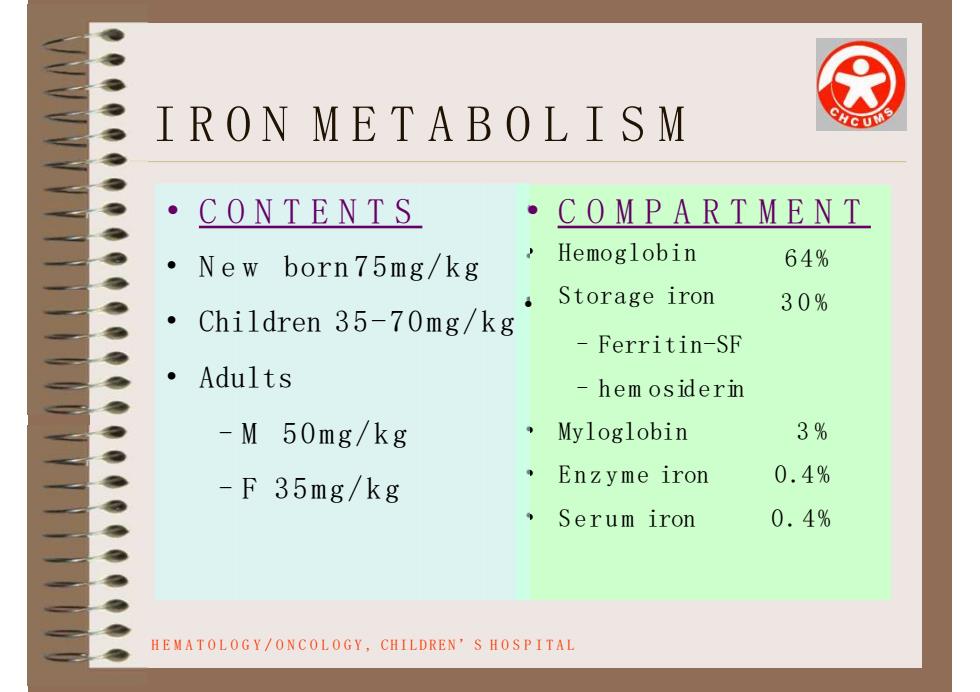
IRONMETABOLISMCUCONTENTSCOMPARTMENTHemoglobin64%Newborn75mg/kgStorage iron30%Chi1dren 35-70mg/kg-Ferritin-SFAdults- hemosiderin3%-M 50mg/kgMyloglobin0.4%Enzyme iron-F35mg/kg0.4%Serum ironHEMATOLOGY/ONCOLOGY.CHILDREN SHOSPITAL
IRON METABOLISM • Hemoglobin Storage iron 6 4% 30% –Ferritin-SF –hem osiderin • Myloglobin • Enzyme iron • Serum iron 3 % 0.4% 0.4% HEMATOLOGY/ONCOLOGY, CHILDREN’S H O S P I T A L • CONTENTS • C O M P A R T M E N T • New born 75mg/kg • Children 35-70mg/kg • • Adults –M 50mg/kg –F 35mg/kg
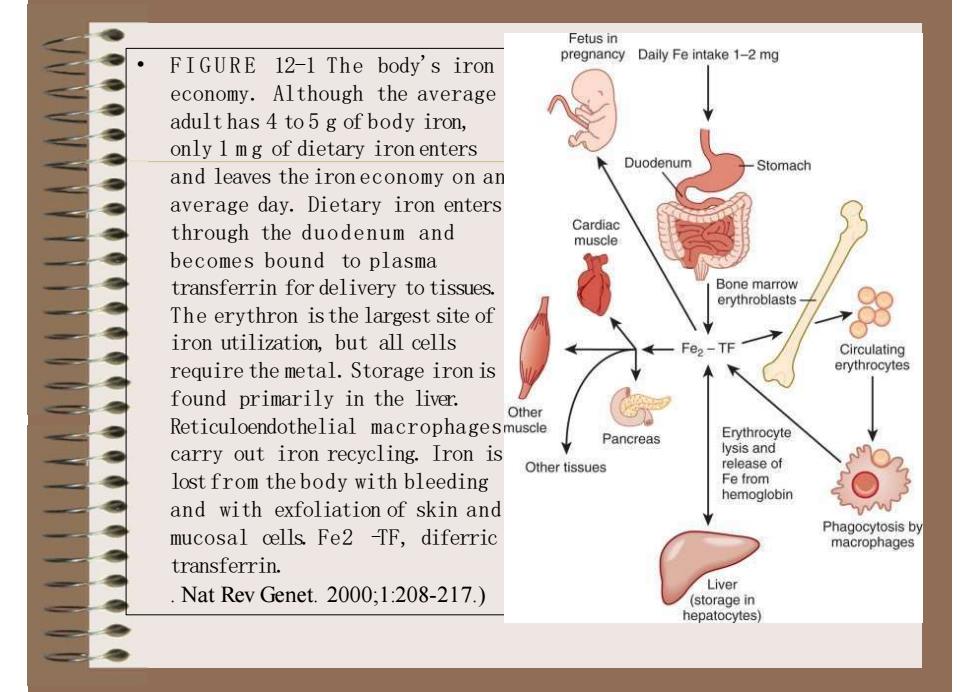
Fetus inDailyFe intake1-2mgpregnancyFIGURE12-1The body s ironAlthough the averageeconomy.adult has 4 to5 g of body iron,Tonly 1 m g of dietary iron entersDuodenumStomachand leaves theironeconomy onanaverage day. Dietary iron entersCardiacthrough the duodenum andmusclebecomes bound to plasmaBonemarrowtransferrin for delivery to tissues.erythroblastsThe erythron is the largest site ofiron utilization, but all cellsFea-TFCirculatingerythrocytesrequire the metal. Storage iron isfound primarily in the liver.OtherReticuloendothelial macrophagesmuscleErythrocytePancreaslysisandcarry out iron recycling.Iron isreleaseofOthertissueslostfrom thebody with bleedingFefromhemoglobinand with exfoliationof skin andPhagocytosis bymucosal cells Fe2 -TF, diferricmacrophagestransferrin.Liver,Nat Rev Genet.2000;1:208-217.)(storageinhepatocytes)
• FIGURE 12-1 The body's iron economy. Although the average adult has 4 to 5 g of body iron, only 1 m g of dietary iron enters and leaves the iron economy on an average day. Dietary iron enters through the duodenum and becomes bound to plasma transferrin for delivery to tissues. The erythron isthe largest site of iron utilization, but all cells require the metal.Storage iron is found primarily in the liver. Reticuloendothelial macrophages carry out iron recycling. Iron is lostfrom the body with bleeding and with exfoliation of skin and mucosal cells. Fe2 –TF, diferric transferrin. . Nat Rev Genet. 2000;1:208-217.)
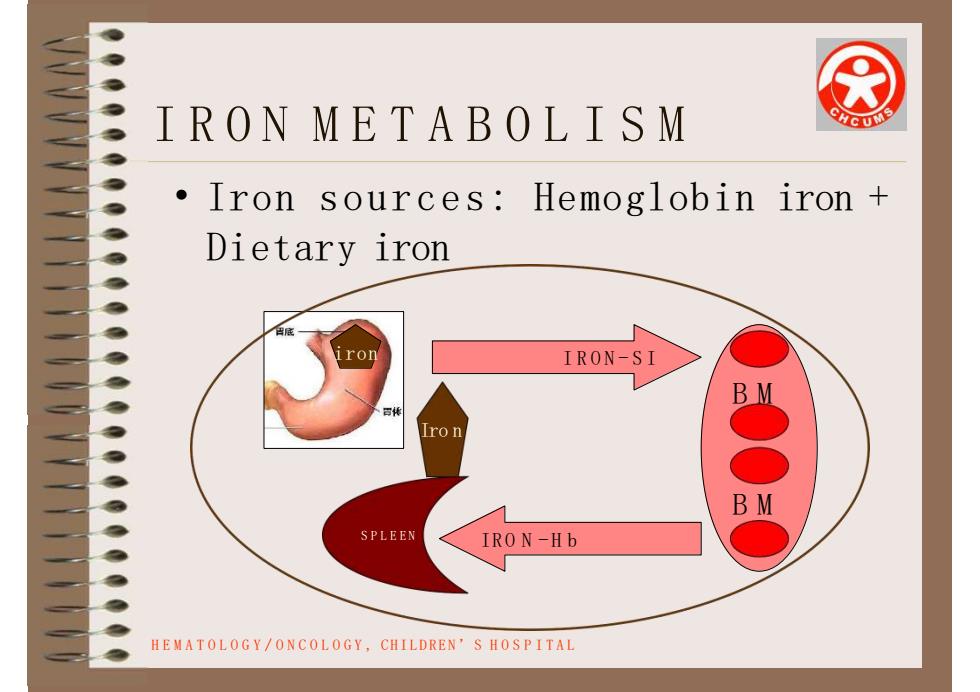
IRONMETABOLISM Iron sources: Hemoglobin iron +Dietary ironIRON-SIBMIronBMSPLEENIRON-HbHEMATOLOGY/ONCOLOGY,CHILDREN'SHOSPITAL
• Iron sources: Hemoglobin iron + Dietary iron IRON METABOLISM iron B M B M IRON - S I IR O N - H b S P L E E N HEMATOLOGY/ONCOLOGY, CHILDREN’S H O S P I T A L Iro n